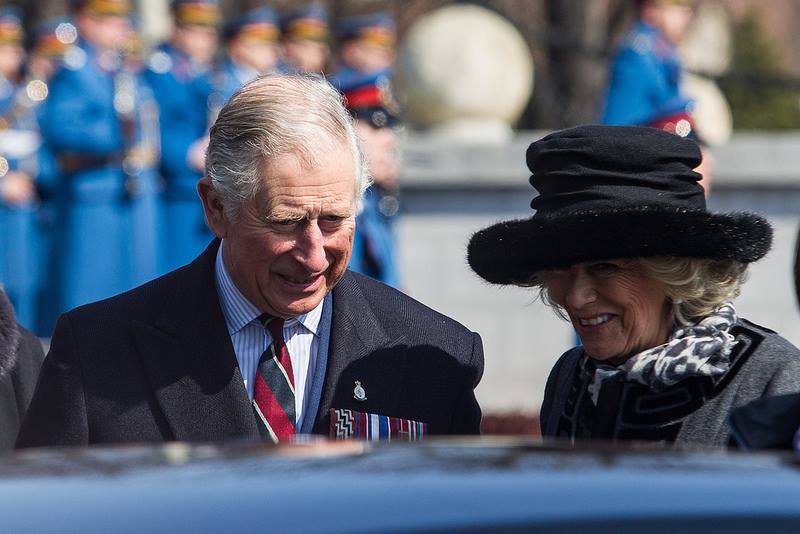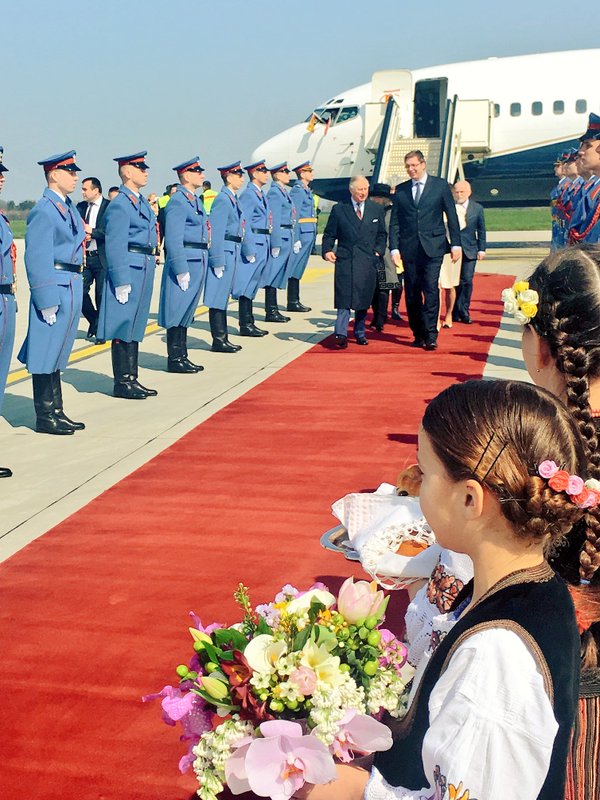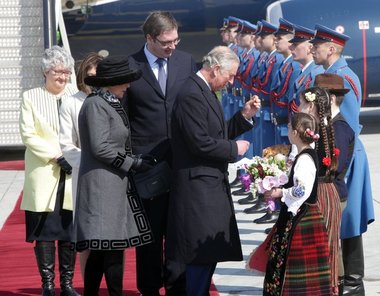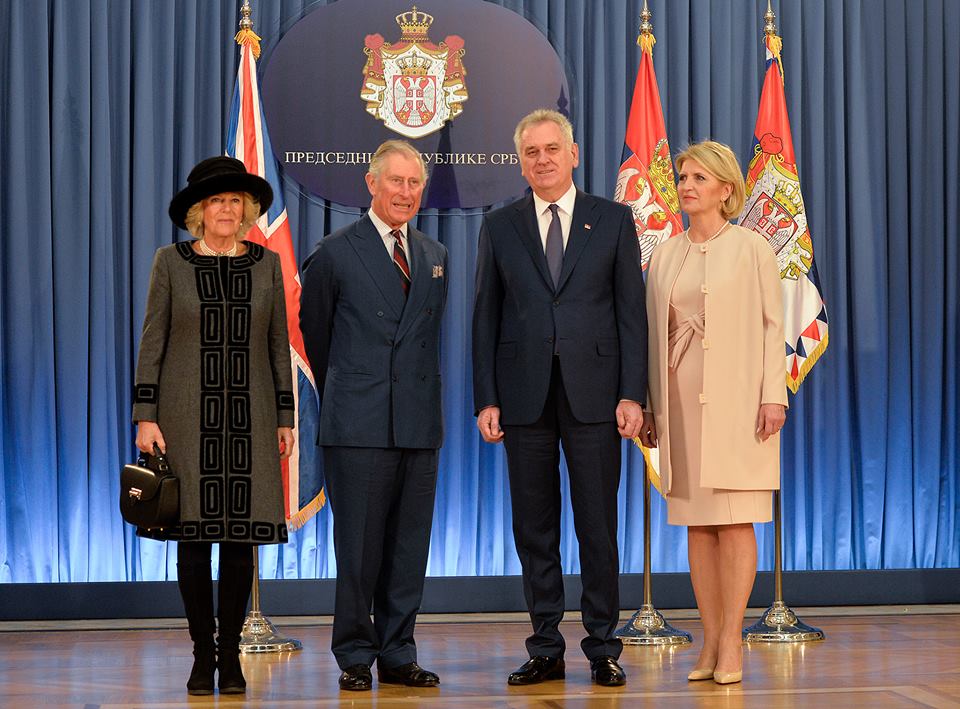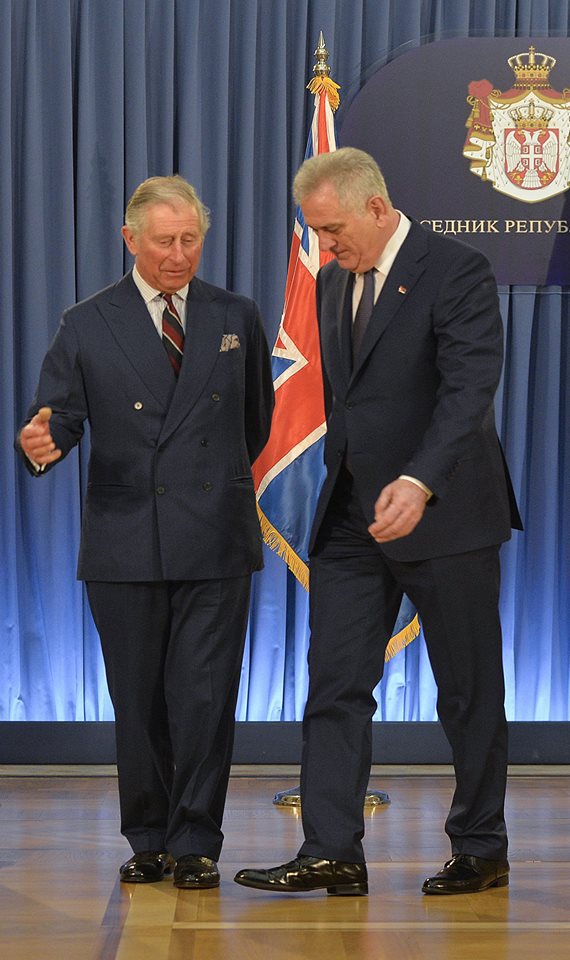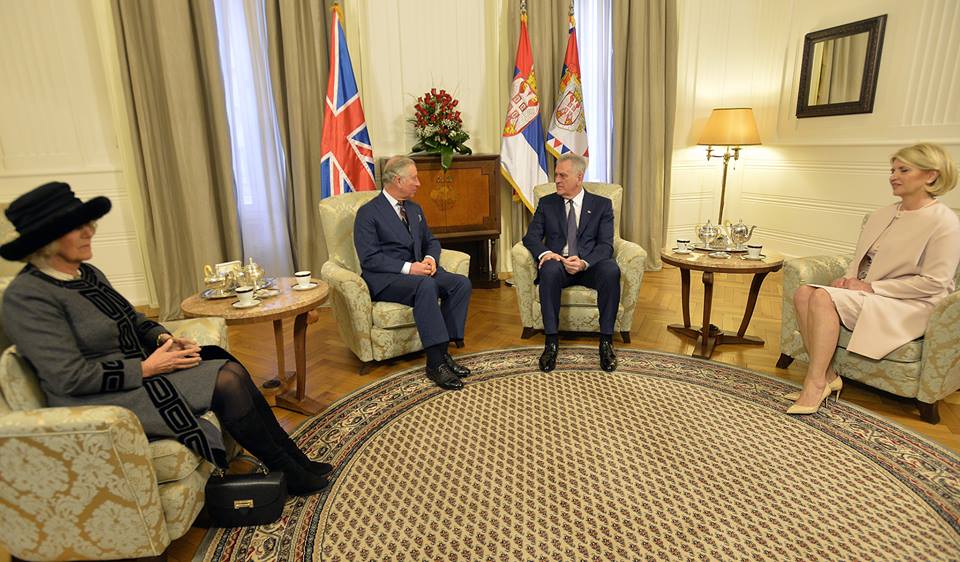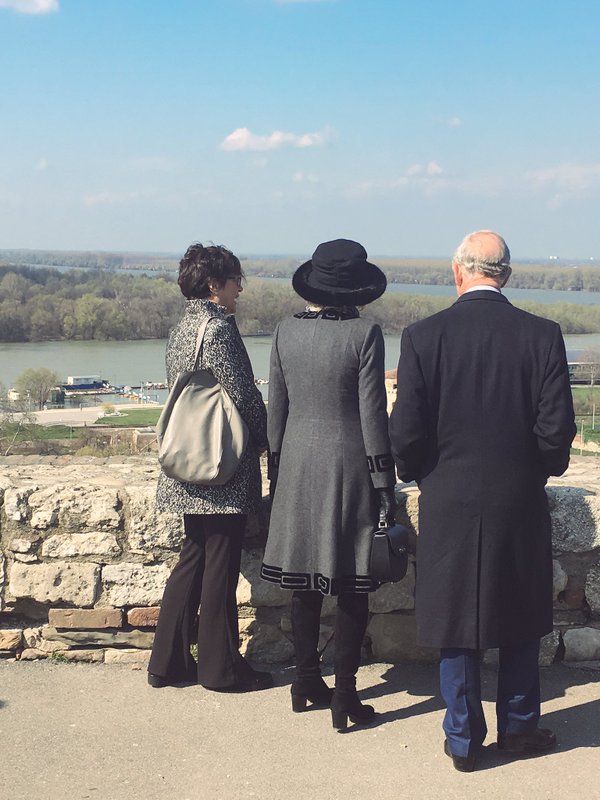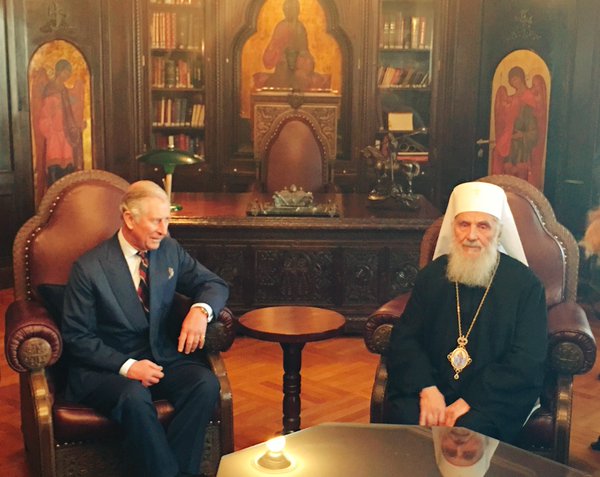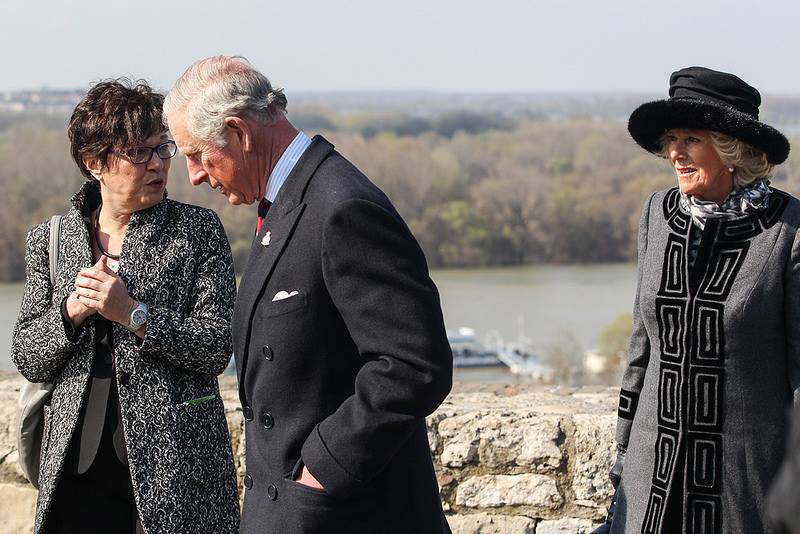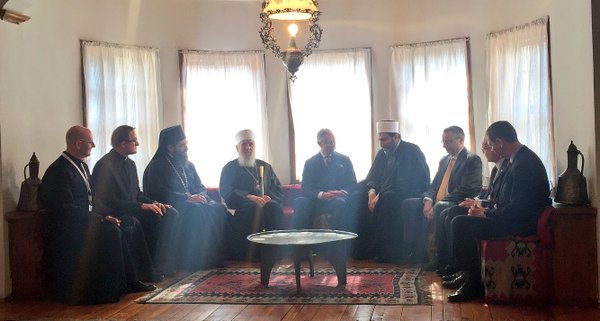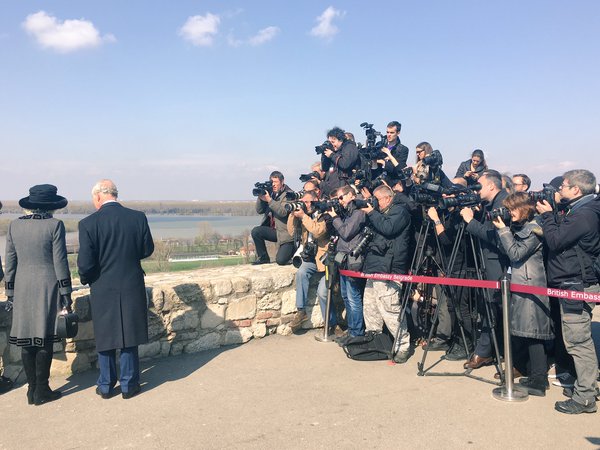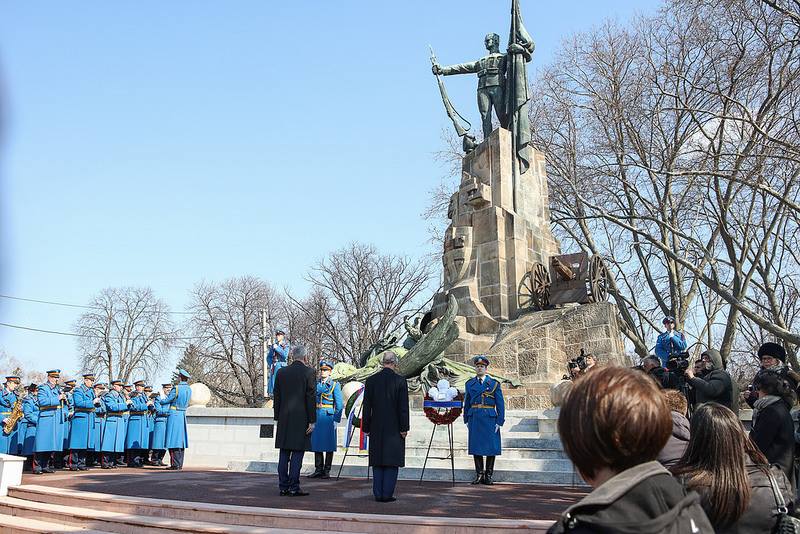(Source: BIRN, www.gov.uk)
Prince Charles and his wife, the Duchess of Cornwall, visited Belgrade on March 16 on their tour of former Yugoslavia, thus reaffirming the British state’s desire for closer ties to Serbia – damaged by their opposing views on Kosovo.
At the same time, while the official schedule highlights a wreath-laying ceremony in honour or British and Serbian soldiers who fought together in World War I – plus a visit to Serbian Church Patriarch Irinej – palace officials have confirmed that the Prince and Duchess may pay a private visit to an old family friend of Britain’s royal house.
“We expect their royal highnesses to have a private meeting with the Crown Prince,” the palace informed BIRN, referring to Crown Prince Alexander.
That private visit will stir interest in the old alliance between the royal houses of Britain and Serbia – one still “is business”, the other, not.
Photo: British Council
The connection dates all the way back to 1923 when Charles’ grandmother, Elizabeth, then Duchess of York, and her husband, the future George VI, visited Belgrade – the first British royals to do so.
They went for the christening of King Alexander of Yugoslavia’s first child, Peter, and for the marriage of his cousin, Prince Paul, to Olga of Greece. Elizabeth became Peter’s godmother.
The visit in 1923 – like this one – was primarily political. The British Foreign Office sent the young royal pair to Belgrade to confirm the British commitment to the new Yugoslav state that had emerged from World War One, which Britain hoped would act as a bulwark against German influence.
HRH greeted by Serbian PM Aleksandar Vučić. Apart from the Prime Minister, the Royal Couple was greeted by the President of the Assembly Maja Gojković and HE Denis Keefe
The President of Serbia Tomislav Nikolić and his wife greeted the royal couple.
Photo: The President of Serbia
Elizabeth and Prince Paul were already friends, however, having met while Paul was at Oxford. Paul had fallen in love with the English aristocracy and their fun-loving ways and became a fixture in Elizabeth’s set, dancing at the Ritz, partying till dawn and speeding around the countryside from one country house to another.
Their respective marriages separated them. But when Olga’s sister, Marina, married Elizabeth’s husband’s younger brother, it solidified a connection between the two couples despite the distance between them.
The 1930s brought dizzying changes to Paul and Elizabeth. In 1935, Britain’s King George V died, his eldest son, Edward, soon abdicated and Elizabeth was unexpectedly catapulted onto the throne beside her husband.
The changes in Paul’s life were just as dramatic. The assassination of his cousin in 1934 meant that he suddenly became Regent of Yugoslavia, Elizabeth’s godson, Peter, being too young to rule.
In the late 1930s, Paul and Olga visited England a good deal, staying with the new King and Queen and with Olga’s sister, Marina, Duchess of Kent.
Royal visit to Kalemegdan Fortress
But high politics intervened to wreck the friendship.
As war first loomed and then broke out, the British government used every means it could to lure Yugoslavia to its side and away from Germany. Paul became the recipient of strident letters from British King and Queen, obviously dictated by the British Foreign Office, urging him to stand by Britain and not to take Yugoslavia into the Axis camp.
For Paul it was a dilemma. The prospect of destroying ties with the country where he had spent some of his happiest years devastated him. But he was dedicated to healing the bitter divide between the Serbs and Croats in Yugoslavia and feared that his country would be destroyed – and torn apart by civil war – if it fought Germany.
In March 1941, his government signed a pact with the Germans that he hoped would keep Yugoslavia out of the war. But he was overthrown within days and forced into exile. Back in England, Elizabeth and George were forbidden to communicate with him.
HRH Prince Charles and His Holiness Patriarch Irinej Gavrilovic of Serbia
Paul’s successor, Peter, did not enjoy his throne for long. Germany invaded Yugoslavia immediately, precipitating – as Paul had predicted – a gruesome civil war. Now Peter also had to leave, and wound up in England, where his mother, Marie, had been living since 1937. There he fell in love with and married the exiled Prince Alexandra of Greece. His own son, Crown Prince Alexander, was born in London in Claridges Hotel. As the heir to the Yugoslav throne had to be born on Yugoslav soil, Prime Minister Winston Churchill obligingly had Suite 212 proclaimed Yugoslav territory for the birth.
Royal visit to Kalemegdan Fortress
With the enforced termination of the friendship between Elizabeth of England the Paul of Yugoslavia – and with the fall of the Yugoslav monarchy – relations between the two houses went down a notch.
England remained the main base of the House of Karadjordjevic, however. Peter’s son, Alexander, lived there, as did his uncle, Tomislav. Paul’s daughter, Elizabeth, was schooled in England and one of her three children lives today in London. Elizabeth is now back in Belgrade but is still a close friend to her cousin, Marina’s son, Prince Michael of Kent.
Alexander, who is also the godson of the present Queen Elizabeth, more or less grew up an Englishman. It would be a disadvantage to him when he went back to Belgrade after the fall of communism, when the Serbs discovered to their dismay that “their” Crown Prince spoke more English than Serbian.
HRH is attending an inter-faith dialogue with representatives from Serbia’s Christian, Muslim & Jewish communities
The British royals, meanwhile, as the diplomatic arm of the British state, had to befriend Yugoslavia’s new, very different rulers. They hosted Tito in lavish style on his visit to London in 1953.
Tito must have been curious about the real attitudes of his smiling hosts who he knew retained regular contact with Alexander, with Paul’s daughter, Elizabeth, and to a degree with the ex-Regent Paul himself.
When Queen Elizabeth and George VI visited South Africa in 1947, they ignored official advice and insisted on meeting their old friend Paul, then living there. When George VI died in 1952, his now widowed friend ensured that Paul was invited to the funeral.
Royal visit to Kalemegdan Fortress
Her daughter, meanwhile, Queen Elizabeth II, visited Yugoslavia in 1972. Tito returned to Britain in 1978 after which Prince Charles went to Belgrade.
During the Communist era, the British royals had in a sense to perform a double act, playing host and guest to Yugoslavia’s communist leaders while cherishing private ties to the family the communists had exiled.
HRH and President of Serbia visit the Monument of the Unknown Soldier
These days, that is no longer an issue. If Prince Charles fits in some time with his mother’s godson – on what looks like a busy schedule – there will be no need for such secrecy.
N0vak Đoković addressed the royal couple:
The following day Their Royal Highnesses will visit the historical city of Novi Sad where they will enjoy Serbian food, arts and cultural heritage. They will visit the Matica Srpska Gallery where representatives from the British Council will present their “Moving Museums” programme and demonstrate how the UK and countries across the Western Balkans are working together to attract new audiences to museums. The Prince will then visit the 700 year-old Kovilj Monastery. Originally built in the 13th Century and renovated in the early 18th Century, the Monastery was revived in the late 1990s and has a thriving monastic community that runs a sustainable business selling honey and brandy to local and international markets. The Prince will also meet those going through the monastery’s “Land of the Living” rehabilitation programme for recovering addicts. The Duchess will attend an event to showcase Serbian food and meet local British and Serbian food and drink producers.
Later that evening, Their Royal Highnesses will attend at a reception hosted by the President of the National Assembly of Serbia at the Parliament building, which will be attended by a range of guests from culture, entertainment, sport and civic society.
